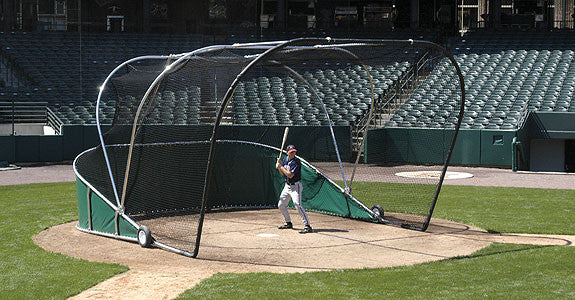Baseball - Softball Knowledge
Arm Strength Drills October 16 2015, 0 Comments
Whether you're throwing out base runners from the confines of Fenway Park or turning a 6-4-3 double play on a local Little League field, throwing is one of the most important, and physically demanding, aspects of baseball
Just as major leaguers can get a dead arm during spring training, younger players also risk injury as they begin throwing regimens in the spring. The Seven Ball Drill below is a great way to increase arm strength and prepare players for the various throws they will make during the season.
Note: Perform the drill's seven separate steps in sequence to ensure proper arm development.
Baseball Arm Strength Drill
Stand shoulder- width apart, with throwing arm placed upwards at a 90- degree angle. While holding elbow with glove, throw ball to partner using just the wrist.
Sit with legs spread and arm in same position as exercise above. This time use the area from the elbow up to throw ball to partner.
Remain sitting and throw ball by rotating hips and turning upper torso. (Focusing on follow- through is not necessary.) Use the glove arm or elbow to direct throw.
Go to one knee. Throw ball by rotating hips and turning upper torso, as in above exercise. This time emphasize follow- through across the raised knee.
Stand with glove arm closest to partner, and feet shoulder- width apart. Repeat the above steps, concentrating on follow- through. This time throw without moving your feet.
Use all the steps above, this time add a crow hop and throw ball to partner. (Crow Hop: A technique in which you hop forward on your front foot during the wind up of your throw.)
Long toss is the last step. Stand approximately 10 feet apart and toss the ball to partner as quickly as you can for one minute. You can even keep track of the number of catches to turn this into a competition. Emphasize a quick release and concentrate on the ball entering and leaving the glove. Note: For infielders, you can turn this last step into a quick toss by reducing the distance.
By following the steps above, players will find it easier to make all the necessary throws in a game, as well as keep their arm healthy throughout an entire season. A good goal to have, no matter the league, when opening day rolls around.
Helping the Young Player with Skills August 04 2015, 1 Comment
Below is a stock answer for concentration and pitch recognition along with being confident at the plate.
Try it and I believe that the player will start to hit and catch better.
For catching take way his glove and play catch with a foam ball or plastic ball then get a baseball and do the
drill I talk about below. We have to get over any fear and use to the ball. Believe it or not when they first
start the glove just gets in the way so eliminate it most of the time.
As simple as this sound get a piece of plywood, prop it up at and angle, have him or us throw the ball up the
board and then field it as it rolls back down.
The for fly balls or high throws, throw the ball onto a roof and catch it as it comes off, it is fun and teaches
throwing and eye hand coordination. Use a rubber ball or tennis ball gives a safer aspect to it if you so
desire.
Coach Arnald Swift
Saftey Council View on Throwing June 10 2015, 1 Comment
At the high school level, a great thrower can be the difference between winning and losing.Throwers can be categorized as pitchers in softball or baseball, quarterbacks in football, field event athletes in track and field, or anyone in a serving sport such as tennis or volleyball. All of these athletes go through the throwing motion of wind-up, cocking, acceleration, deceleration, and follow through. Significant stress is placed on the shoulder and elbow during these phases. We must do everything within our power to reduce the likelihood of injury to these important members of our teams.
As coaches, parents and sports medicine profession¬als, we have a tendency to overlook how many times an athlete actually goes through the throwing motion during practices and games. Therefore, many overuse injuries occur that should and could be prevented by implementing a few simple rules into the conditioning program of the throwing athlete.
A well-planned program is essential to ensure that the risk of injury is decreased and performance is enhanced. There are ten components of this plan:
1. Warm-up: The warm-up program for the throwing arm should last for at least 15 minutes and include activities, which raise the core temperature of the body and a good flexibility program.
2. Gradual Progression: An increase in the activity level should be gradual. The body may require 6-8 weeks to fully reach optimal fitness. Starting a pro¬gram that is advanced may only cause injures. In¬creases should be made as the body accommo¬dates to the demands that are placed upon it. Throwing too much too early can result in trouble later.
3. Timing: Over training is one of the most common ways that injuries occur. When an athlete gets tired or run down, that athlete becomes much more prone to injury. Most of the time over training an arm is worse than under training. Timing is everything!
4. Specialization: A good program will include skills that are needed for the particular sport that the athlete is preparing for. If there is a desire to compete in a specific activity, then training should be structured to meet the demands of that activity. Different demands are placed on baseball pitchers than on softball pitchers and different demands are placed on a quarterback than on a tennis player.
5. Intensity Level: Most of us never workout at our full potential. At lower levels, it takes much longer to achieve top physical condition. At higher levels, the risk of injury is much greater. Quality should always be considered to be more important than quantity of exercise. Minimize the number of throws... maximize the effort.
6. Individuality and Capacity Level: The demands that are placed on the throwing arm should be based on the individual ability and fitness level of the athlete. A body is more at risk if a person tries to perform at a level for which he or she is not prepared. This capacity level may be increased gradually. All conditioning programs should be based on individual needs, goals and capacity levels.
7. Strength, Endurance and Flexibility: These are the building blocks that will help anyone excel at his or her activity of choice, especially for the throwing athlete. These elements are necessary to perform at a high level in any activity. All exercise programs should include exercises, which enhance each of the areas of strength, muscular endurance and flexibility.
8. Motivation: With motivation comes success. An athlete who is not motivated is more prone to injury than a person who has the desire to excel. The athlete should go into a workout with a positive attitude so that time is not wasted and improvement is great. An athlete must decide what will motivate his or her team or self.
9. Skills and Techniques: An athlete should always use the proper skills and techniques in conditioning programs and in the throwing motion. Mechanical issues are a significant problem for most throwing athletes. When an athlete suffers from a mechanical problem, injuries occur. Working on the mechanics of throwing is not fun, but will pay off down the road in competition.
10.Consistency: An athlete should have a plan for a conditioning and throwing program and stick with it. A regular routine must be maintained in order to maintain a high level of physical condition. Consistency will also help avoid injury.
Above all, coaches and parents should make sure that their athlete is ready for the demands that will be placed upon them when practice and competition begin. An untrained, underdeveloped throwing arm with significant stresses placed upon it is a prime candidate for injury.
NATIONAL CENTER FOR SPORTS SAFETY










